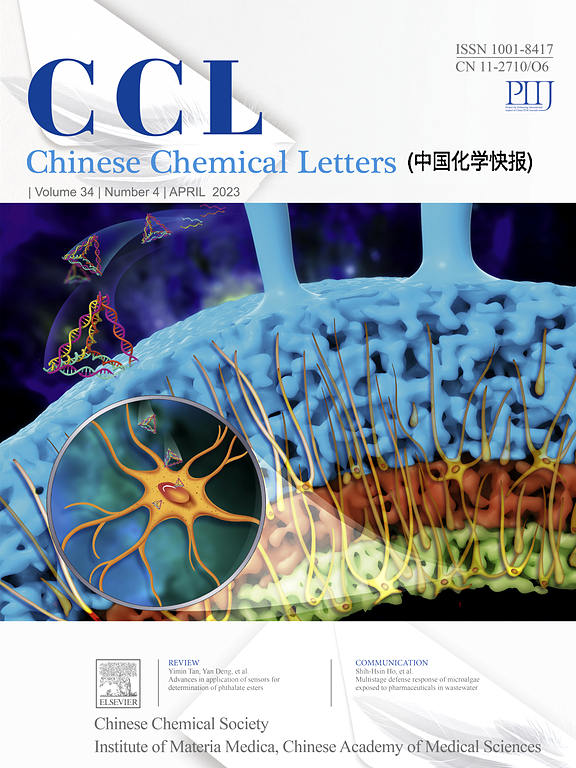石墨烯量子点光催化剂在光催化反应中增强电荷转移的研究进展
IF 9.4
1区 化学
Q1 CHEMISTRY, MULTIDISCIPLINARY
引用次数: 0
摘要
面对能源危机和环境问题,发展高效的绿色能源技术势在必行。光催化是一种很有前途的方法,它利用太阳能进行二氧化碳(CO2)还原、有机污染物降解和通过水分解产生氢(H2)等过程。高效光催化的关键在于设计优良的光催化剂。石墨烯量子点(GQDs)由于其独特的上转换光致发光(UCPL)、强光捕获能力和独特的光致电荷转移特性而引起了人们对光催化的极大兴趣。然而,它们的独立使用受到稳定性和活动性的限制。通过将GQDs集成到复合光催化剂中,增强了光生电子-空穴对的分离,提高了光催化性能。本文首先综述了光催化剂中GQDs的制备方法,包括自上而下和自下而上的方法。随后,对gqds -半导体复合材料(金属有机框架、CdS、铋基氧化物等)在CO2还原、有机污染物降解、H2生成等光催化反应中的应用进行了开创性的详细总结。并对相应的典型实例和机理进行了阐述和讨论。最后,对gqds光催化剂在光催化领域面临的挑战和前景进行了展望。本文综述对高效gqds光催化剂的开发具有一定的启示和指导意义。本文章由计算机程序翻译,如有差异,请以英文原文为准。

Advances in graphene quantum dots-based photocatalysts for enhanced charge transfer in photocatalytic reactions
The development of efficient green energy technology is imperative in the face of energy crises and environmental concerns. Photocatalysis, which utilizes solar energy for processes such as carbon dioxide (CO2) reduction, organic pollutants degradation, and hydrogen (H2) production through water splitting, is a promising approach. The key to high-efficiency photocatalysis lies in the design of superior photocatalysts. Graphene quantum dots (GQDs) have sparked significant interest in photocatalysis due to their exceptional up conversion photoluminescence (UCPL), strong light-capturing capability, and unique photoinduced charge transfer properties. However, their standalone use is limited by stability and activity. By integrating GQDs into composite photocatalysts, the separation of photogenerated electron-hole pairs is enhanced, boosting photocatalytic performance. This review provides the first overview and summary of the preparation methods of GQDs in photocatalysts, encompassing top-down and bottom-up strategy. Subsequently, a pioneering detailed summary was made on the applications of GQDs-semiconductor composites (metal organic frameworks, CdS, and bismuth-based oxides, etc.) in photocatalytic reactions such as CO2 reduction, organic pollutant degradation, and H2 generation. Furthermore, the corresponding representative examples and mechanisms are also elaborated and discussed respectively. Finally, the challenges and prospects for GQDs-based photocatalysts in the field of photocatalysis are proposed. This review provides inspiration and guidance for the development of efficient GQDs-based photocatalysts.
求助全文
通过发布文献求助,成功后即可免费获取论文全文。
去求助
来源期刊

Chinese Chemical Letters
化学-化学综合
CiteScore
14.10
自引率
15.40%
发文量
8969
审稿时长
1.6 months
期刊介绍:
Chinese Chemical Letters (CCL) (ISSN 1001-8417) was founded in July 1990. The journal publishes preliminary accounts in the whole field of chemistry, including inorganic chemistry, organic chemistry, analytical chemistry, physical chemistry, polymer chemistry, applied chemistry, etc.Chinese Chemical Letters does not accept articles previously published or scheduled to be published. To verify originality, your article may be checked by the originality detection service CrossCheck.
 求助内容:
求助内容: 应助结果提醒方式:
应助结果提醒方式:


